Potrebujeme váš súhlas na využitie jednotlivých dát, aby sa vám okrem iného mohli ukazovať informácie týkajúce sa vašich záujmov. Súhlas udelíte kliknutím na tlačidlo „OK“.
ASTM F2423-11
Standard Guide for Functional, Kinematic, and Wear Assessment of Total Disc Prostheses
Automaticky preložený názov:
Štandardné Guide pre funkčné, kinematická a opotrebenie Hodnotenie Total Disc Protézy
NORMA vydaná dňa 1.7.2011
Informácie o norme:
Označenie normy: ASTM F2423-11
Poznámka: NEPLATNÁ
Dátum vydania normy: 1.7.2011
Kód tovaru: NS-53831
Počet strán: 10
Približná hmotnosť: 30 g (0.07 libier)
Krajina: Americká technická norma
Kategória: Technické normy ASTM
Kategórie - podobné normy:
Anotácia textu normy ASTM F2423-11 :
Keywords:
intervertebral disc prosthesis, IVD, spinal implants, wear assessment, weight loss method, ICS Number Code 11.040.40 (Implants for surgery, prothetics and orthotics)
Doplňujúce informácie
| Significance and Use | ||||||||||||
|
This guide can be used to determine the fatigue and wear behavior of IVD prostheses subjected to functional and kinematic cyclic loading/motion for relatively large numbers of cycles (for example, various designs of IVD prostheses, as well as the effects of materials, manufacturing techniques and other design variables on one particular design can be determined using this guide). This guide is intended to be applicable to IVD prostheses that support load and transmit motion by means of an articulating joint or by use of compliant materials. Ceramics, metals, or polymers, or combination thereof, are used in IVD prosthesis, and it is the goal of this guide to enable a kinematic wear and/or fatigue comparison of these devices, regardless of material and type of device. |
||||||||||||
| 1. Scope | ||||||||||||
|
1.1 This guide provides guidance for wear and/or fatigue testing of total disc prostheses under functional and kinematic conditions and, to this end, describes test methods for assessment of the wear or functional characteristics, or both, of total disc prostheses. 1.2 Both lumbar and cervical prostheses are addressed. 1.3 Load and kinematic profiles for lumbar and cervical devices are not identical and, therefore, are addressed separately in the guide. 1.4 Partial disc replacements, such as nucleus replacements or facet joint replacements, are not intended to be addressed. 1.5 Wear is assessed using a weight loss method in a testing medium as defined in this guide. 1.6 This guide does not address any potential failure mode as it relates to the fixation of the implant to its bony interfaces. 1.7 It is the intent of this guide to enable comparison of intervertebral disc (IVD) prostheses with regard to wear and fatigue characteristics when tested under the specified conditions. It must be recognized, however, that there are many possible variations in the in vivo conditions. A single laboratory simulation with a fixed set of parameters might not be universally representative. 1.8 Most IVD prostheses primarily fall into two classifications: articulating ball-in-socket type prostheses, and elastomeric or compliant type prostheses. For the former, this guide primarily addresses Mode 1 wear (defined herein); whereas for the latter, this guide addresses potential failure of the prosthesis when the implant is subjected to a range of motion and/or loads that fall within the full range of possible physiologic motions and loads. 1.9 For articulating components, this guide predominantly describes a Mode 1 test. The user is cautioned that other modes of wear may occur and may have significant influence on the functionality and performance of an articulating IVD prosthesis, and therefore the user should consider the effects of other wear modes on the performance of the prosthesis. 1.10 In order that the data be reproducible and comparable within and between laboratories, it is essential that uniform procedures are established. This guide is intended to facilitate uniform methods for testing and reporting of data for total disc replacement prostheses. 1.11 Without a substantial clinical retrieval history of IVD prostheses, actual loading profiles and patterns cannot be delineated at the time of the writing of this guide. It therefore follows that the load and motion conditions specified by this guide do not necessarily accurately reproduce those occurring in vivo. Rather, this guide provides useful boundary/endpoint conditions for evaluating prosthesis designs in a functional manner. 1.12 The values stated in SI units are to be regarded as the standard with the exception of angular measurements, which may be reported in either degrees or radians. 1.13 This guide is not intended to be a performance standard. It is the responsibility of the user of this guide to characterize the safety and effectiveness of the prosthesis under evaluation. 1.14 This standard does not purport to address all of the safety concerns, if any, associated with its use. It is the responsibility of the user of this standard to establish appropriate safety and health practices and determine the applicability of regulatory limitations prior to use. |
||||||||||||
| 2. Referenced Documents | ||||||||||||
|
Podobné normy:
Historická
1.8.2009
Historická
1.1.2012
Historická
1.12.2011
Historická
1.10.2012
Historická
1.12.2011
Historická
1.8.2009
Odporúčame:
Aktualizácia zákonov
Chcete mať istotu o platnosti využívaných predpisov?
Ponúkame Vám riešenie, aby ste mohli používať stále platné (aktuálne) legislatívne predpisy
Chcete vedieť viac informácií ? Pozrite sa na túto stránku.


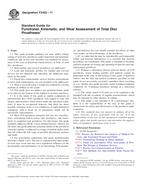
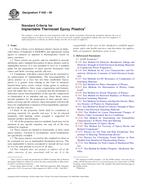 ASTM F602-09
ASTM F602-09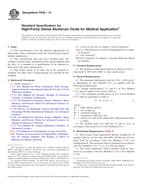 ASTM F603-12
ASTM F603-12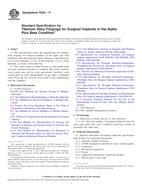 ASTM F620-11
ASTM F620-11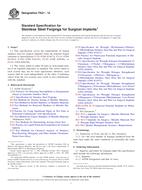 ASTM F621-12
ASTM F621-12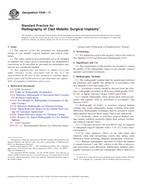 ASTM F629-11
ASTM F629-11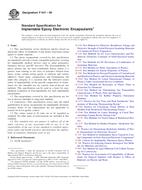 ASTM F641-09
ASTM F641-09
 Cookies
Cookies
